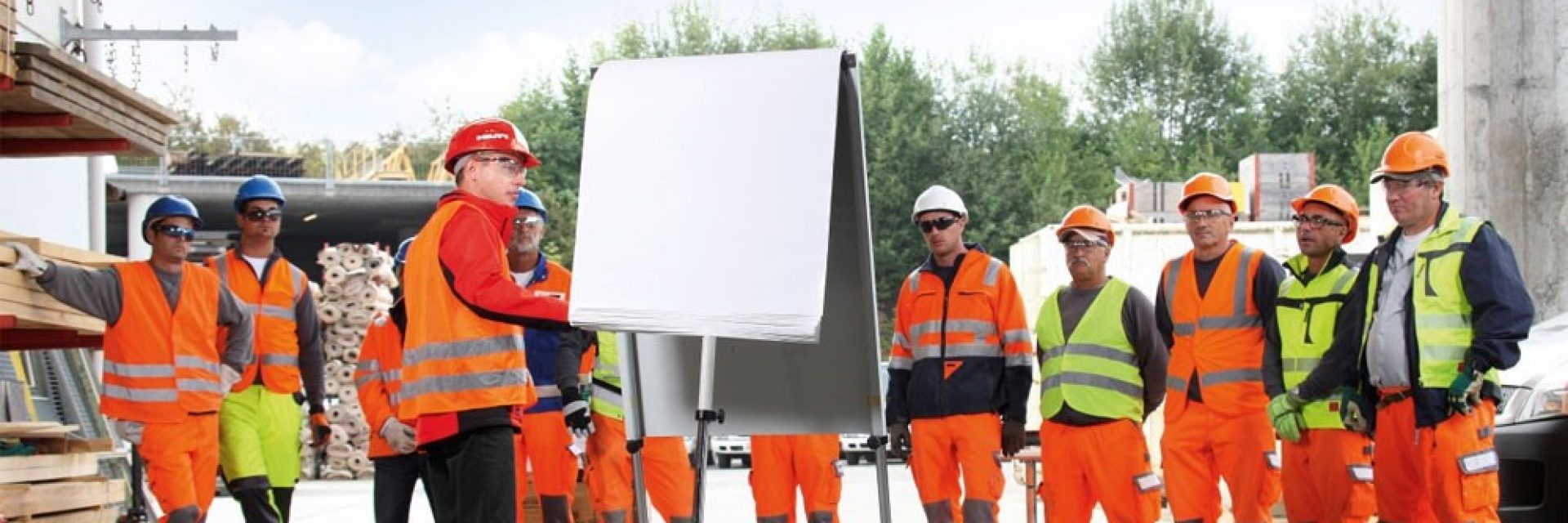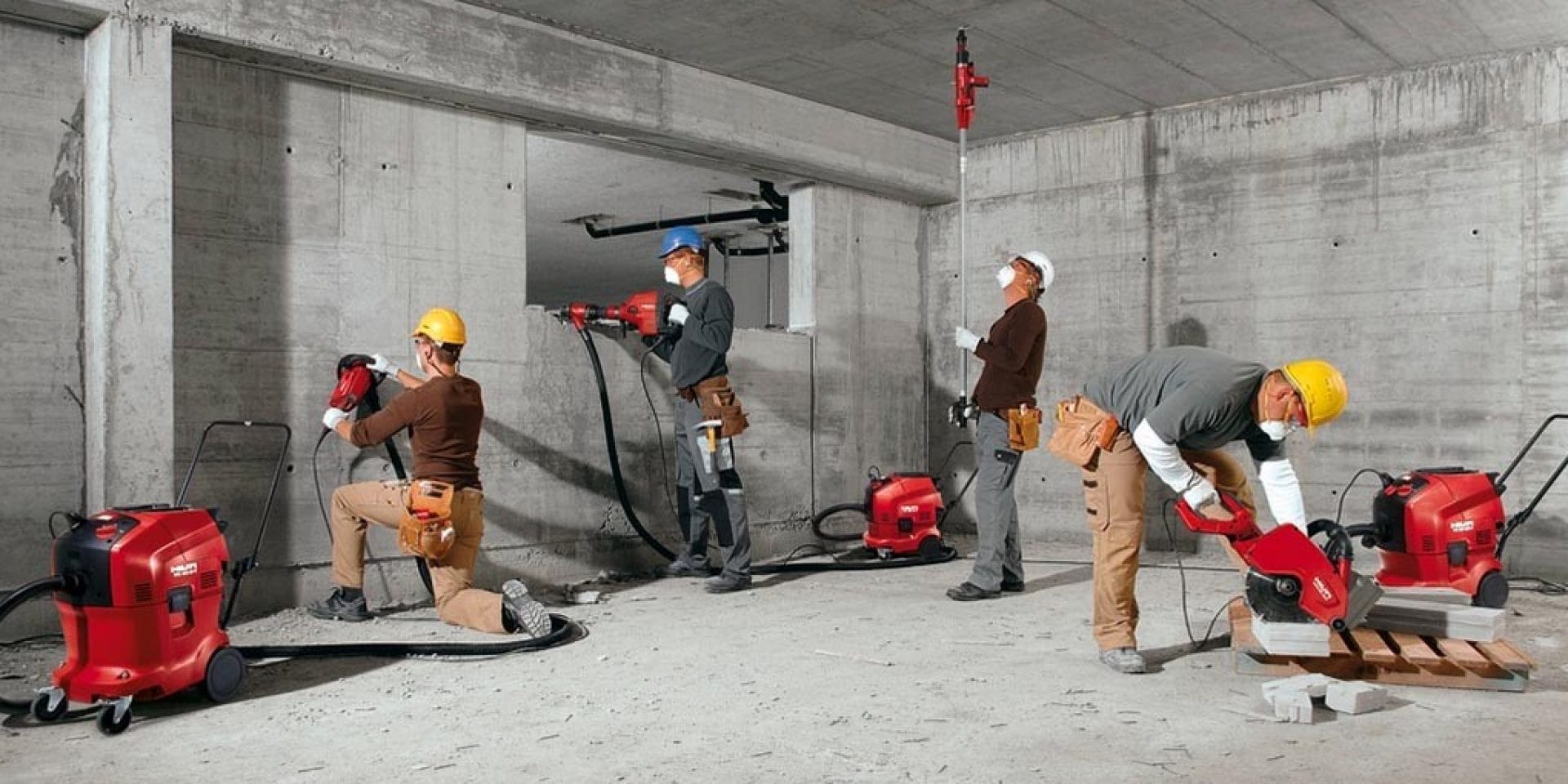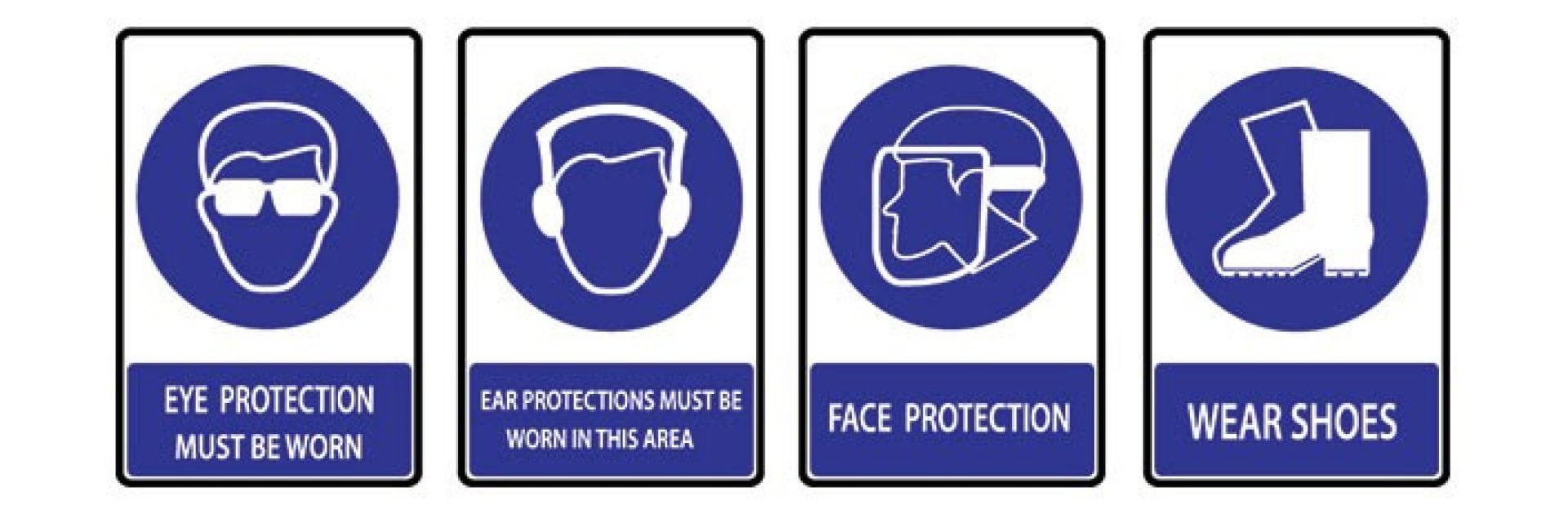- Home
- Company
- Media Relations
- Industry Blog
- Site safety
WHY SIGNAGE AND PROTECTIVE EQUIPMENT ARE IMPORTANT
Site safety

Construction and building sites can present many hazards, so it's important to take appropriate measures and ensure that every area is safe. Apart from being a legal requirement under health and safety laws, this is also key to the protection of workers, visitors and people passing by. Two of the main components when it comes to maintaining the safety of a building site are signage and protective equipment.

Signage
Construction zones are required to have adequate signage for safety purposes, depending on the complexity and size of the site. The types of signs that are typically erected usually fall into one of four categories:
- Mandatory signs: Provide specific instructions, such as wearing a hard hat. They consist of a blue circle with a white image inside.
- Warning signs: Alert to potential safety hazards, such as nearby machinery operating or overhead hazards, and are typically yellow.
- Danger signs: Warn of more serious, potentially life-threatening hazards and clearly say 'danger'. These signs are identified by a red oval on a black background.
- Emergency signs: Display information about emergency-related facilities and equipment and are usually green.
When used correctly, these signs can ensure that a site is safe and provides sufficient warning and protection.
Often, 4-in-1 signs will be implemented to allow site managers and builders to more efficiently manage their safety obligations. As the name suggests, these signs incorporate the four common signs, along with any other site rules.
Before implementing signage, it is crucial to inspect the construction site and identify all potential hazards and risks. Once this is done, consider these factors and determine which type of sign is best for each hazard. By implementing correct and thorough signage, workers and the general public will remain safe and aware of the risks that inevitably come with being exposed to a construction or building environment.

Protective Equipment
Personal protective equipment includes everything from boots to high visibility clothing and any other safety accessories that minimise risk of injury. This equipment does not control hazards, but can act as an additional safety layer, backup or last resort when all risks cannot be controlled or mitigated. Sometimes, protective equipment can introduce new issues, such as overheating, lack of visibility or restricted movement, but it still needs to be provided and worn appropriately.
Employees must be provided with personal protective equipment that meets the minimum health and safety standards, or at least an allowance to purchase it. While this is the responsibility of the employer, everybody on site must comply with all health and safety requirements. Employers must also provide the appropriate training to ensure that their workforce know how to properly wear and operate all protective equipment.
Encouraging colleagues to look after each other - along with ensuring they are always wearing the appropriate protection - will ensure the overall safety and compliance of a construction site.
Safety is an important and regulated issue, so it is crucial that all laws are abided by and that the appropriate measures are implemented to help protect workers and members of the public alike. Always seek advice from a professional or check the relevant laws in your state to be sure that you are following up-to-date and accurate regulations.
